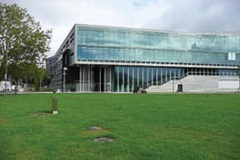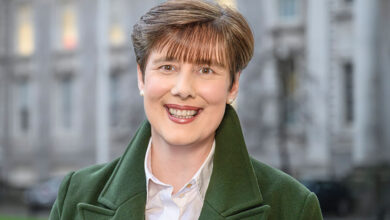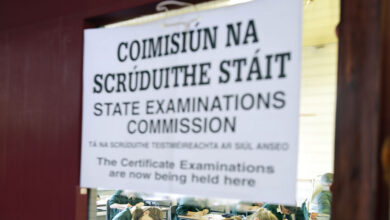Reforming third level education: the systems approach
 Mary Doyle outlines the strengths of Ireland’s higher education sector and how the new performance framework is holding institutions accountable for delivery.
Mary Doyle outlines the strengths of Ireland’s higher education sector and how the new performance framework is holding institutions accountable for delivery.
The education and training system facilitates individuals through learning to achieve their full potential and contribute to Ireland’s social, cultural and economic development. The reforms currently under way across the Irish education system are intended to deliver a coherent, modern and flexible education and training system based on evidence informed policies designed. It is being designed to anticipate and respond to the changing needs of learners, society and the economy and be recognised internationally as a quality education and training system.
The Irish education and training system has many strengths. The International Institute for Management Development (IMD) World Talent Report 2014 ranked Ireland 6th in the world – the highest ranking since 2007 when Ireland also ranked 6th. Ireland has been improving since our lowest ranking of 18th in 2010. Notable underlying metrics in the report include the fact that we are ranked number one in the world for availability of skilled labour and 5th for an education system that meets the needs of a competitive economy. Other international benchmarks show the Irish education and training system is performing well on a range of indicators, including:
• Irish primary level students were above the international average in reading and maths in international surveys (PIRLS and TIMSS, 2011);
• Irish students performed well above average in science at second level (PISA, 2012);
• the number of early school leavers is well below the EU average (Eurostat); and
• forty-nine per cent of 30-34 year olds have attained third level education – making us first in the EU and 5th in the OECD (OECD, 2014).
However, no education and training system can afford to stand still. This article will focus on the systems approach to reform of higher education where implementation of a wide-ranging reform programme is underway to enhance the quality of research, teaching and engagement in the system, modernise governance and accountability of institutions and a restructuring of the system to achieve those aims.
Performance and reform
The National Strategy on Higher Education to 2030 which was published in 2011 is the roadmap underpinning the reform of the higher education sector.
It outlined an ambitious programme of work designed to bring together all of the higher education institutions (HEIs) in a more coherent system, working to deliver on stated national objectives.
Since then, work has been underway in the Department of Education and Skills, the Higher Education Authority and the individual HEIs to implement this complex agenda. The key features which have now been put in place include the publication of a Higher Education System Performance Framework by the Minister for Education and Skills stating national priorities and key objectives for higher education from 2014-2016, and the initiation of a ‘strategic dialogue’ with all of the HEIs based on this framework in relation to the contribution to national objectives from the position of the particular mission and strengths of each institution.
 This, in turn, led to the signing of a ‘compact’ between the HEA and each HEI which sets out this contribution and how it will be measured over a three-year period. The HEA published the first systems performance report for 2014-2016 in May 2014 which provides the first set of benchmarks against which the performance of the system can be judged over time.
This, in turn, led to the signing of a ‘compact’ between the HEA and each HEI which sets out this contribution and how it will be measured over a three-year period. The HEA published the first systems performance report for 2014-2016 in May 2014 which provides the first set of benchmarks against which the performance of the system can be judged over time.
The system performance framework is a powerful tool to allow us to understand the existing internal dynamics of the HE system and to plan for the future. Specifically, it is designed to:
• hold the system accountable for performance for the delivery of national priorities and monitor performance of the system as a whole;
• articulate all the expectations on the system of different areas of government and agencies across the various dimensions of higher education activity;
• increase the visibility of performance of the system to government and the wider public;
• contribute to system and policy development by highlighting structural and other deficits
including data capacity;
• allow HEIs to identify their strategic niche and mission and agree a performance compact aligned with funding with the Higher Education Authority; and
• achieve great transparency in the use of resources and to demonstrate this effectively (shared services, Student Universal Support Ireland).
The work at the level of the individual HEI is being complemented by the development of the ‘regional cluster’ approach which is designed to develop and build on the synergies which exist at regional level in the higher education sector. The initial planning work is under way in all clusters, focused particularly on rationalisation of provision and student pathways.
The sector is also seeing the most substantial structural reform in its history, including the merging of institutions and the process which is in place by which merged institutions in the institute of technology sector can apply to become technological universities.
Next steps
The introduction of the system performance framework coupled with the strategic dialogue process and performance funding will provide a coherent and structured framework for a changed relationship between the State and the higher education sector in the future.
Having established the baseline data and information, it will now be possible to both steer and track system performance on an annual basis.
One of the most important elements of the systems approach has been to achieve clearer lines of sight about how exactly the higher education system in Ireland is performing in order to provide greater transparency and accountability.
There have been challenges in this process, including aligning and mobilising leaders right across a complex sector to build a systems approach and to communicate this effectively to a variety of stakeholders.
The foundations are now in place and the next step is to build on these foundations to work together as a system to create a more dynamic, responsive and high quality higher education sector.
It is clear that a strong network of outward-facing institutions with critical mass and the strengths in research, innovation and teaching will help to raise the international profile and performance of Ireland’s institutions and will support social, cultural and economic well-being right across Irish society.
Mary Doyle is Deputy Secretary at the Department of Education and Skills, responsible for higher education and North/South and international relations.





